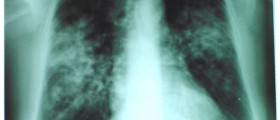
Grave's disease is an autoimmune disorder affecting the thyroid gland characterized by excessive production of thyroid hormones. This excess is blamed for various changes in the metabolism. Due to abnormal levels of thyroids hormones patients suffering from Grave's disease typically experience palpitations, they sweat a lot, may develop hypertension, become irritable, tired and lose weight even though there are no changes in their diet or they even start consuming more food than they used to. Apart from these systemic effects of the disease, Grave's disease is also closely connected to specific changes affecting the eye. Namely, patients who have had the disease for some time may additionally develop Grave's eye disease.
Thyroid and Eye Problems
The eyes are relatively sensitive in patients with Grave's disease and are prone to the attack of autoantibodies produced by the impaired immune system of these individuals. Antibodies attack the eye muscles and connective tissue within the eye socket. The reason why autoantibodies attack these structures is because they actually contain certain proteins that resemble the protein in the thyroid gland, the one that is the part of the body but is not recognized as such and represents the target of autoantibodies.
Thyroid disease of the eyes may be mild and well tolerated or rather severe. Only in 20% of all cases the progression of the illness may be serious and associated with complex vision impairment.
It is essential to emphasize that the eye disease actually does not depend on the level of thyroid hormones in the blood. It is solely a consequence of the direct attack of autoantibodies. This explains why in some patients thyroid hormones are actually within optimal range and they still have vision problems. Because of that doctors have different approach when it comes to the very treatment of Grave's disease and eye complications such patients might eventually develop.
According to available statistical data 1 million American citizens are diagnosed with Grave's eye disease each year. It seems that cigarette smoking may be a contributor to the disease and patients who continue smoking once they are diagnosed with the condition are also at higher risk of irreversible visual impairment.
Who Gets Grave's Eye Disease?
Only patients suffering from Grave's disease may eventually end up with eye issues. Scientists are not sure which patients will develop the disease and when. Still, they are due to check patients on a regular basis and try to diagnose the eye disease in its initial stages when proper treatment may successfully prevent further progression and the onset of more complex problems.
Symptoms and signs patients develop and experience are of major help when diagnosing the condition. For example, sudden swelling of the eyelids and tissues around the eyes may occur in the very beginning of the disease. Furthermore, the eyes may feel gritty and burning, are irritated and there is excess tearing. Some patients complain about double vision or decreased vision as well as reduced brightness of colors. Progression of the disease is associated with protrusion of one or both eyeballs and patients may eventually experience difficulty when trying to close their eyelids. This problem is especially severe when patients are sleeping. Inadequate closure of the eyelids leaves the eyeball exposed which may cause dryness and damage to the superficial layers.
The hallmark of the disease is actually proptosis i.e. bulging of the eyeballs. It affects 70-90% of all patients and never develops rapidly. Instead the protrusion may take some time to fully develop.
Once inflammation of eye muscles takes place, these structures may become permanently congested and stiff and cause visual disturbance due to permanent limitation of eye movements.
Treatment for Grave's eye disease is separated from the treatment for Grave's disease of the thyroid gland and they are in fact completely different. The goal of the treatment for Grave's disease in general is to reduce the excess production of thyroid hormones which is successfully achieved with radioactive iodine or surgery. The treatment for Grave's eye disease, on the other hand, must continue even after the function of the thyroid gland is brought under control because autoantibodies might continue attacking the eye structures, precipitating further scarring and other damage.
Practically all patients are treated through two phases. During the first phase doctors treat the active disease. This phase does not linger more than 3 years. The goal is to preserve vision and integrity of various eye structures. Most patients are prescribed artificial tears that keep their eyes moist, Prednisone which reduces the inflammation of the eyelids and controls autoantibodies, preventing further damage to the eye. Most severe cases may additionally benefit from radiation therapy and surgical decompression.
The second phase is actually the remission phase and comprises correcting permanent changes in one's vision. It starts once the active disease is brought under control. Patients may, for example, undergo corrective surgery which deals with double vision. They may also require eyelid retraction. Orbital decompression is another correction surgery performed once patients enter the remission.
And finally, patients who smoke are due to get rid of this unhealthy habit because smoking may only increase the severity of damage and boost scarring of the affected tissues.

















Your thoughts on this
Loading...